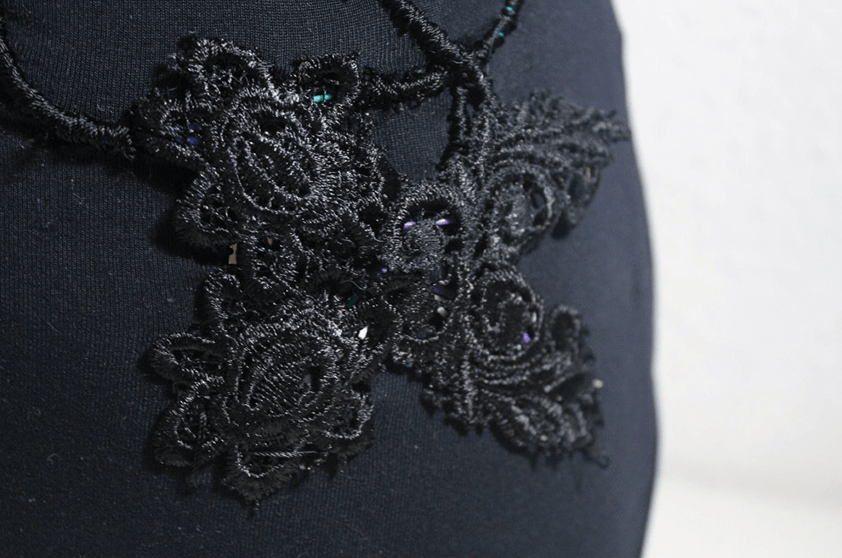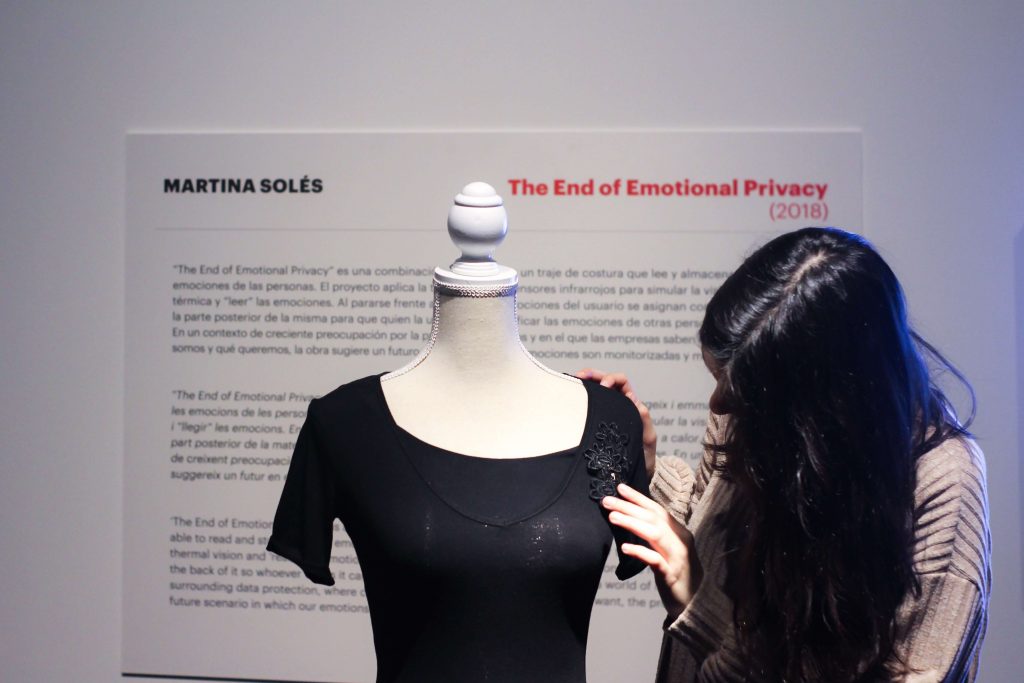
A bodysuit that reads and stores people’s emotions and allows you to “feel” how others are feeling. The project applies infrared sensor technology to simulate thermal vision and “read” emotions. By standing in front of it, the user’s emotions are read and mapped as heat into the back of the bodysuit. In a context of growing concern over privacy, where corporations know who we are and what we want, ‘The End of Emotional Privacy’ suggests a future in which our emotional states are monitored, manipulated, and monetised.
🔬 Initial research: senses
A sense is a physiological capacity of organisms that provides data for perception.
This diagram shows how through senses get that from the world that our mind transforms into a perception of what the world is.

*This data is received through certain types of stimuli. These receptors send impulses in certain patterns, to send information about the intensity of a stimulus.
Considering we have 5 senses, intuition has always been known as our “6th” sense. What if intuition was a sense, for real? That made me think about empathy, then, what if empathy was a sense?
This project will be developed around this question, seeking to find a solution to amplify empathy by exploring emotions and how to understand them. The goal is to be able to feel what others are feeling.
“Emotions are guesses that your brain constructs at the moment when millions of brain cells work” – Lisa Feldman Barret
Therefore, how people really feel? Among all the methods that are being used at this moment to explore emotions, such as heart rate, face tracking, brain waves or skin conductivity, we decided to give a chance to body heat.
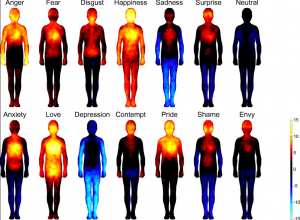
💡 The idea and the device
An empathy amplifier that detects emotions around you, by sending heat notifications, developed as a wearable bodysuit, so you can easily feel the heat.
Based on how senses work, we created a flowchart and we replicated it in order to create a circuit logic.

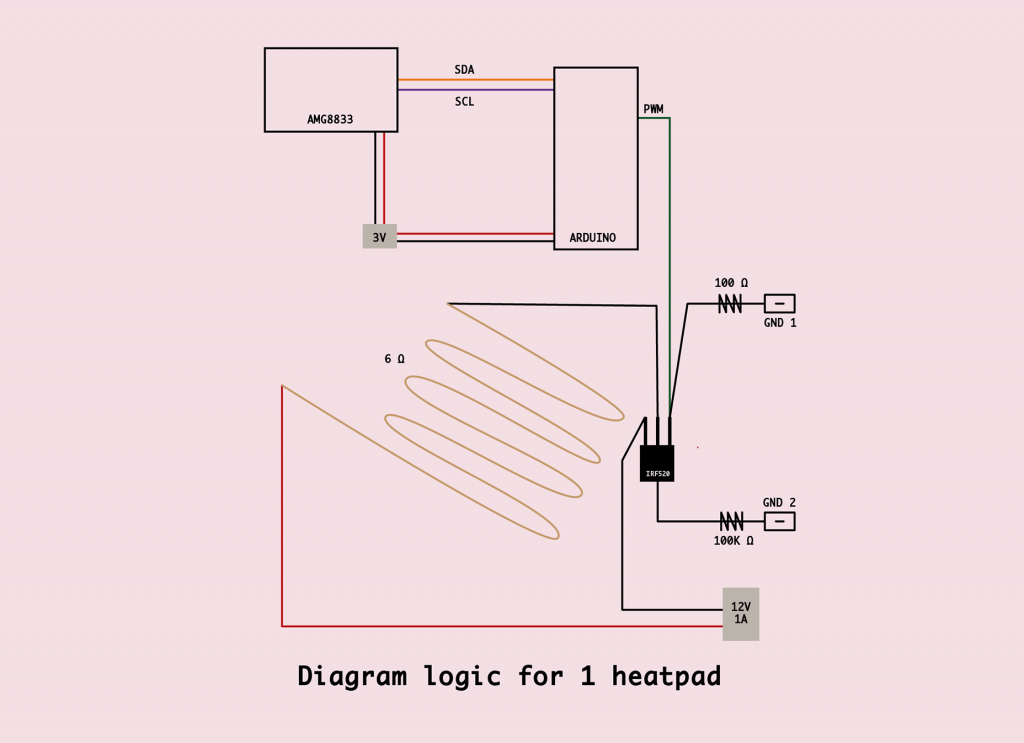
And this is the diagram for the full prototype:
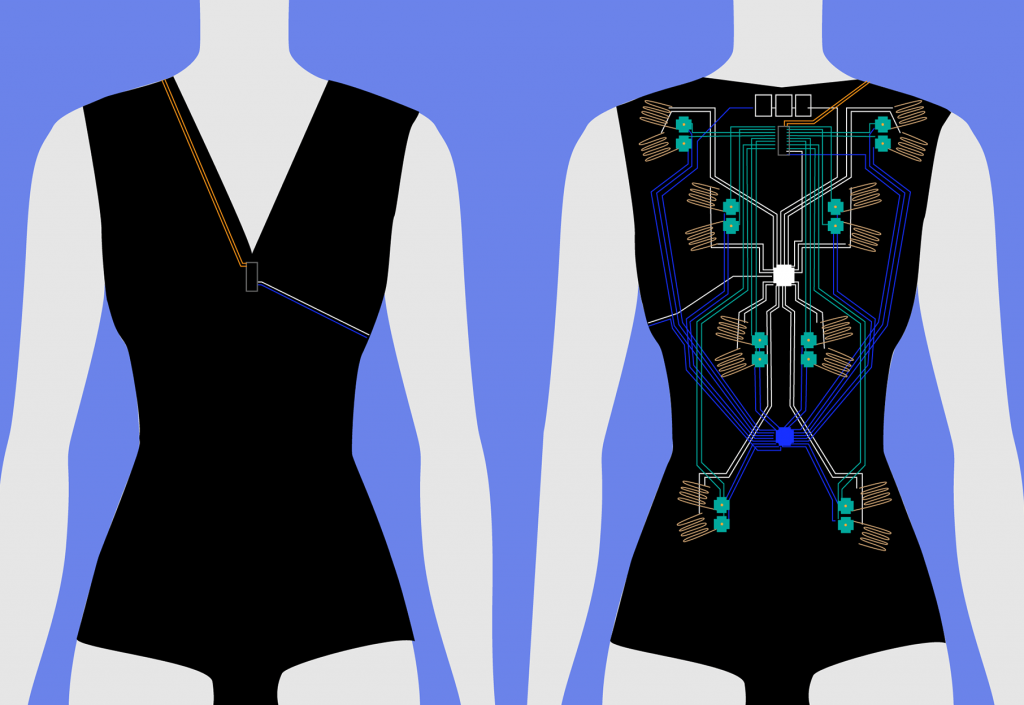
🛠 The process
The first prototype was based on over 100 embedded wires, and 16 DIY heatpads made with conductive thread on a lace pad as base.

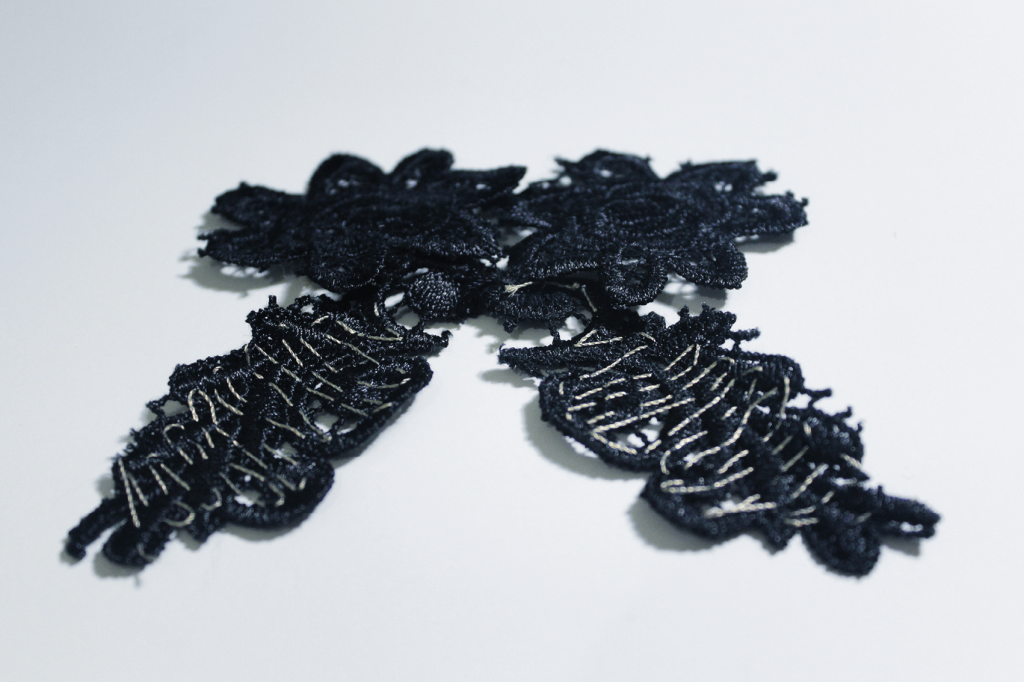
For the second prototype, I focused on using only conductive thread. The combination is Karl Grimm conductive thread for the connections, and silver-plated conductive thread to build the DIY heat pads. Before I got to that conclusion, I burned several fabrics, broke a few Arduinos, and considered buying chunky heat pads instead of wasting time in building my own. But I managed and they warmed up nicely.
As the project had to be exhibited one month, instead of the lace pads I’ve got the back of the bodysuit embroidered so the feeling of warmth was more noticeable on cotton (over than the nylon of my black lace pads) as well as being way more resistant to the touch of hundreds of users during the exhibition.
💝 Getting emotional data
“The End of Emotional Privacy” aims to make people reflect on the fact that our emotions could be used as data. All the values that the IR sensor is reading, are sensed to a private database for personal further analysis, so whoever is wearing it, could learn how to me empathic.
This is an example of values of that database:
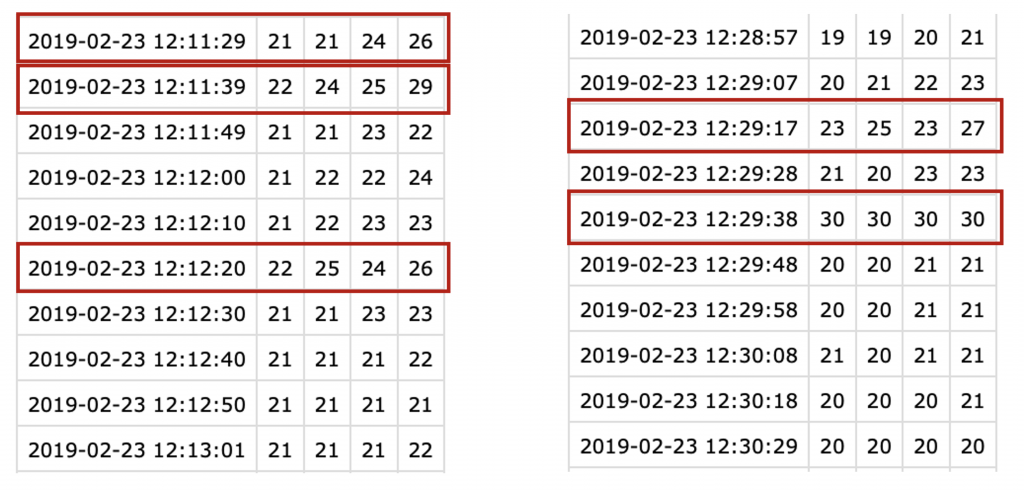
The values highlighted in red are the ones indicating that someone was in front of the wearable as it is detecting their heat.
What if all this emotional data is not used just for personal use, but is managed by big corporations? Then, they could be sending us ads when we are more vulnerable to buy.
In order to make the prototype more interactive for the exhibition format, I made a simple real time data visualisation with p5.js which displayed on a screen the emotion that the sensor just read. The sensor read values from 0 to 80ºC in an angle of 60º, working by proximity. Knowing that:
0 – Standby
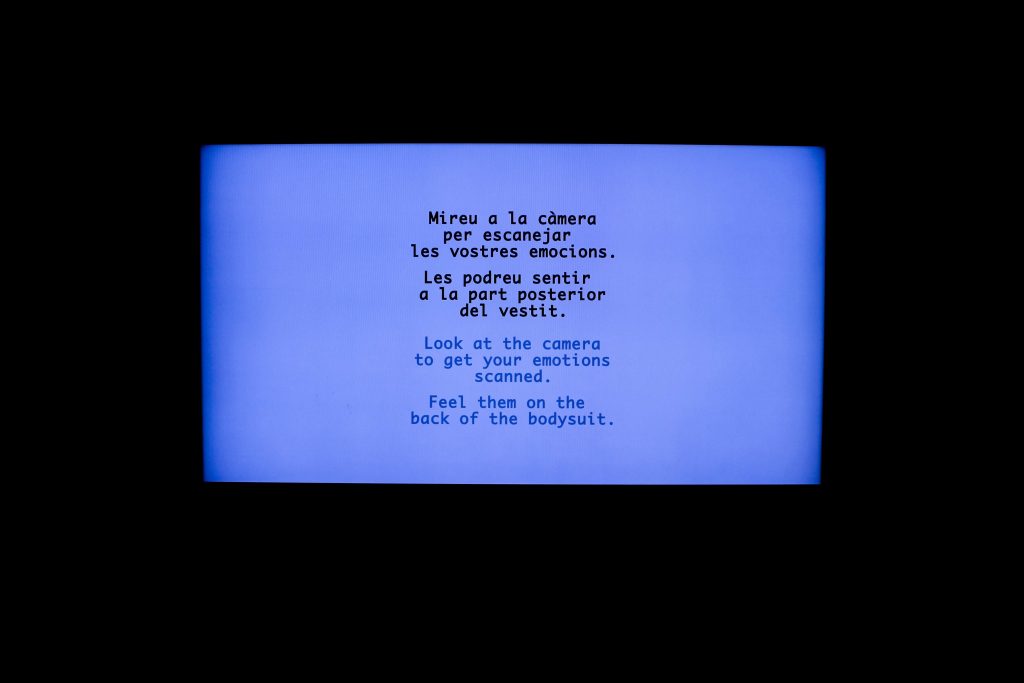
1 – Sad
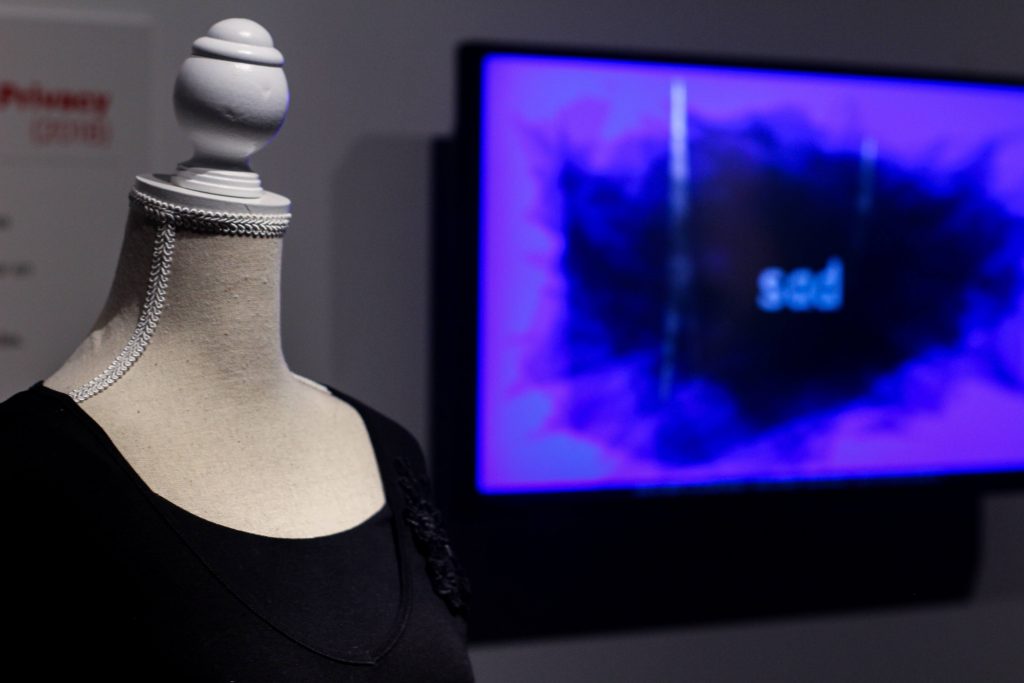
2 – Happy
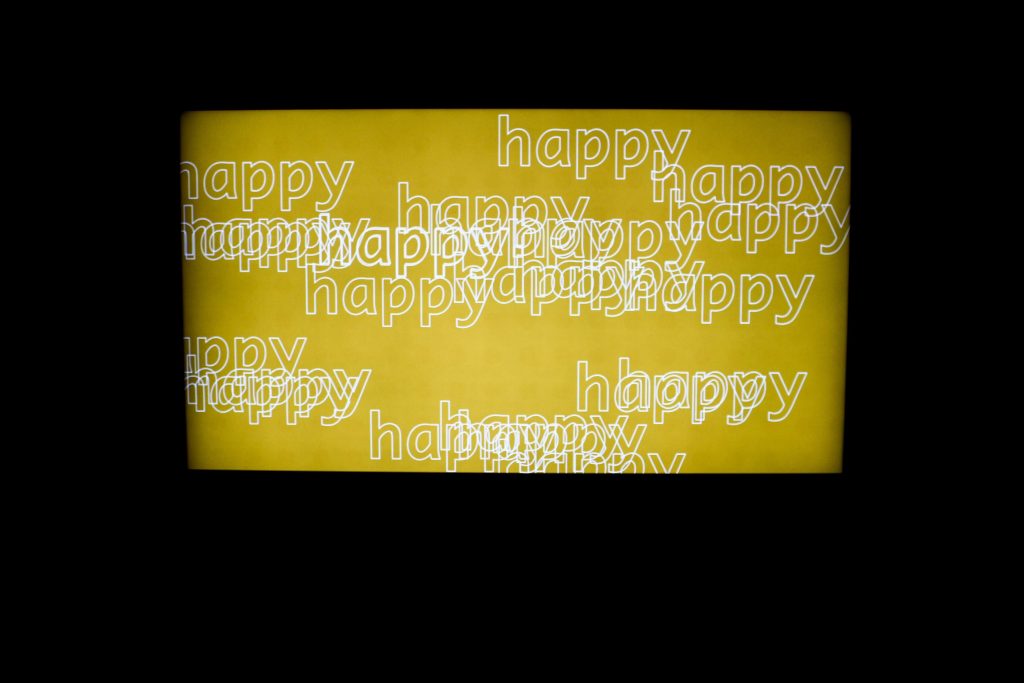
3 – Anxious

4 – Fearful

📺 Press coverage
The project was exhibited in the Museum of Design of Barcelona, DHUB Barcelona, among other projects for a month.
In this clip extracted from the Spanish national news, you can see some of the other projects, as well as a short interview that I had:
I also appeared in Barcelona’s local tv:
I even took part in a documentary about privacy from Catalonia’s national television. Here is the link to the chapter. I appear from minute 7.
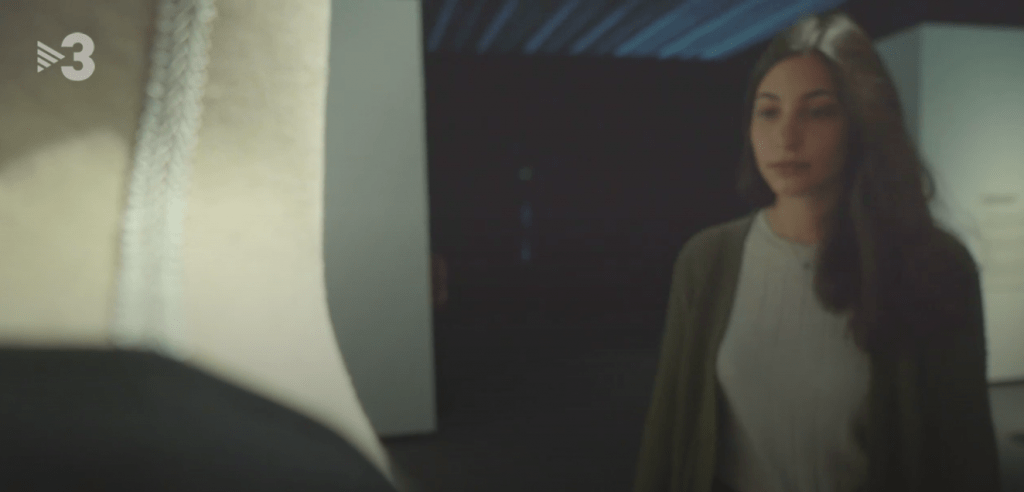
And here is the link to an article of a national newspaper that interviewed me too.
‘The End of Emotional Privacy’ is a project made during the Master in Advanced Interaction, IAAC (2018).



